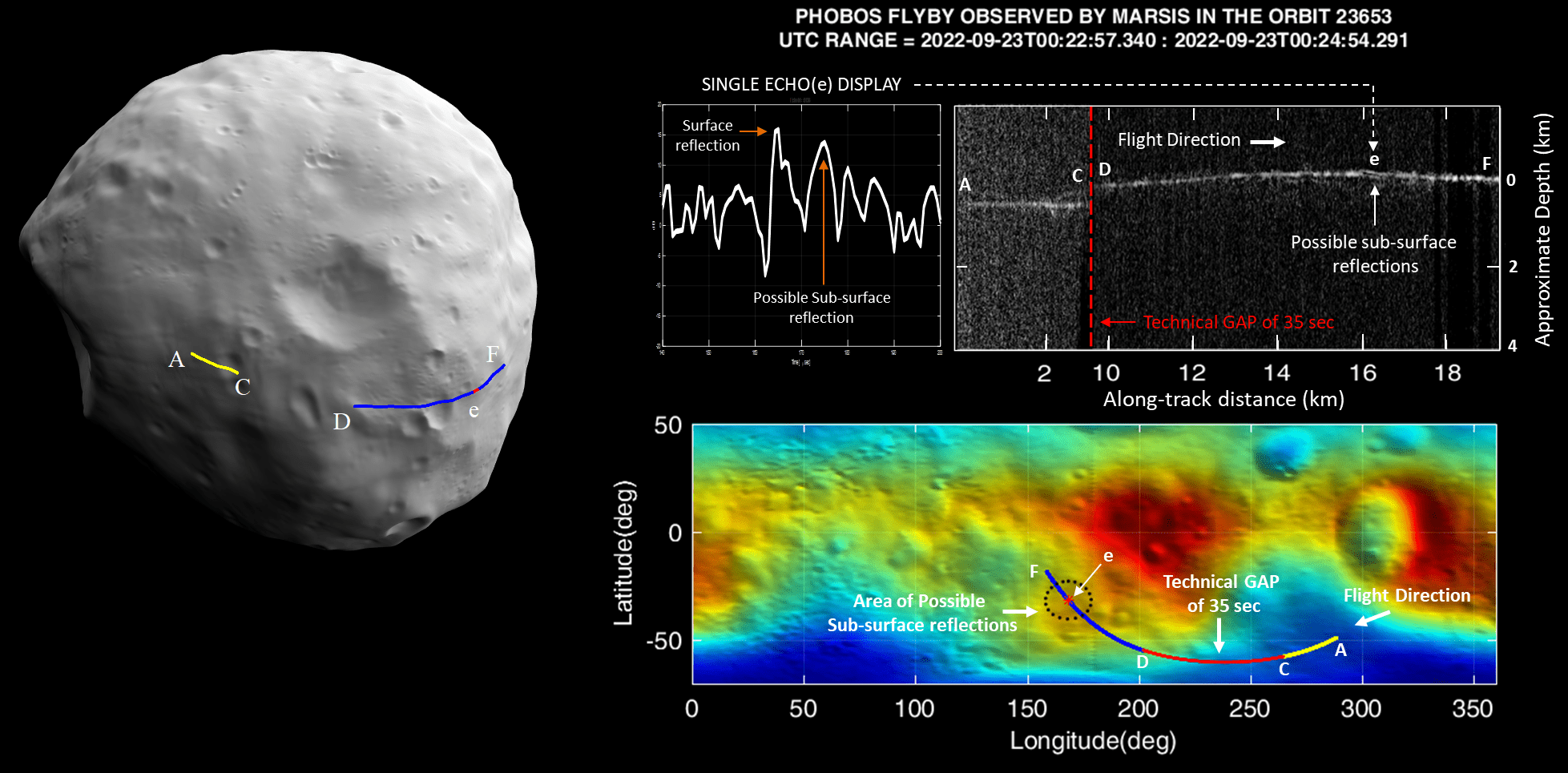The two Martian moons Phobos and Deimos are puny compared to our own, but what were once considered ordinary asteroids captured by the planet’s gravity have turned out to be much more interesting. Now, a view inside the larger of the pair could help us understand whether its mysterious origins lie in the asteroid belt, or in material stripped from the planet it orbits.
The Mars Advanced Radar for Subsurface and Ionosphere Sounding (MARSIS) instrument on the European Space Agency’s Mars Express orbiter has allowed planetary scientists to see inside the planet from a distance of at least 250 kilometers (155 miles). However, a recent software upgrade allows it to function over shorter distances and its operators realized it could be applied to the Martian moons as well. In September this was trialed for the first time, giving astronomers a taste of the interior of Phobos. Future flybys could reveal much more.
“During this flyby, we used MARSIS to study Phobos from as close as 83 km,” said Andrea Cicchetti of Istituto Nazionale di Astrofisica in a statement. “Getting closer allows us to study its structure in more detail and identify important features we would never have been able to see from further away. In future, we are confident we could use MARSIS from closer than 40 km. The orbit of Mars Express has been fine-tuned to get us as close to Phobos as possible during a handful of flybys between 2023 and 2025, which will give us great opportunities to try.”
MARSIS beams radio waves at its target and collects their reflection. Most bounce off the surface, but some penetrate, only to reflect from internal boundaries between materials of different densities. This capacity allowed MARSIS to make its most famous discovery, the large reservoir of water beneath the Martian south pole.
Planetary scientists now debate if Phobos and Demos, small as they are, have an origin similar to that of our Moon, formed from material kicked up during a collision. “Their appearance suggests they were asteroids, but the way they orbit Mars arguably suggests otherwise,” said the ESA’s Colin Wilson. The possibility Phobos and Demos are remnants of a larger moon is also under consideration.
The first flyby probably won’t be enough to settle the question, although analysis is continuing. “But we have already seen possible signs of previously unknown features below the moon’s surface,” Andrea said.
The image MARSIS collected is dominated by echoes from the surface of the doomed moon, but there is something else there as well. What the Mars Express team is uncertain about is the source of the additional reflections marked at ‘e’ on the image below.

A ‘radargram’ acquired by MARSIS during the Phobos flyby showing the echoes from the radiowaves. Brighter signals, mean more powerful echos. The continuous bright line shows the surface echo, but the lower reflections at (e) could be subsurface structure. The left and bottom-right images show the path of the observation across the surface of Phobos. Image Credit: INAF – Istituto Nazionale di Astrofisica
These could be from jumbled material on the surface, but could also indicate subsurface features that could provide clues to how the moon formed.
The Martian Moon eXploration mission, set to launch in 2024 and return samples from Phobos in 2029 is to be led by the Japanese Space Agency (JAXA), but will include participation from ESA. Although we may have to wait until then to really settle the question of Phobos’s origins, the more that is learned beforehand from MARSIS and other tools, the better the mission can be targeted when the time comes.
Source Link: Peering Inside Mars’s “Doomed” Moon Phobos Hints At Strange Subsurface Features